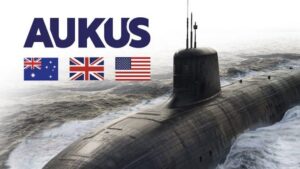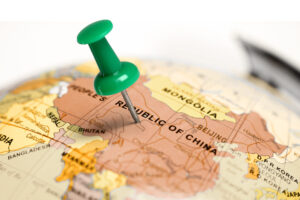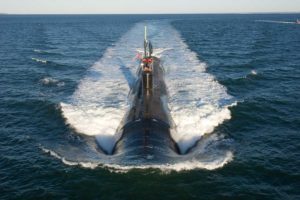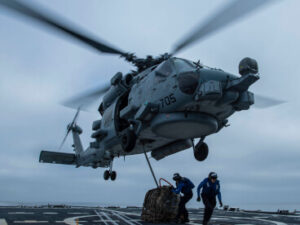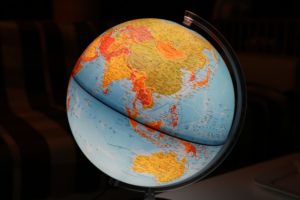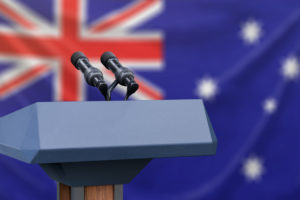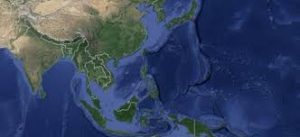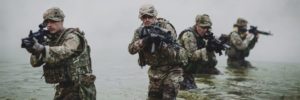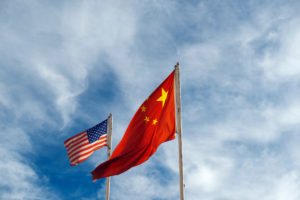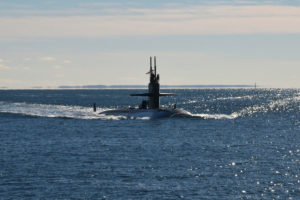Abstract
China’s One Belt One Road, “digital iron curtain,” and grey zone activities have contributed to what the 2022 National Defense Strategy diagnoses as America’s urgent need to sustain and strengthen deterrence.[1] Meanwhile, the ongoing war in Ukraine has demonstrated that the Joint Force cannot focus on China as the “pacing challenge” to the exclusion of Russia. To address these and other threats, the Joint Force must partner for success in deeper, wider, and more creative ways. It should prioritize building alliances and partnerships in the Indo-Pacific through purposeful dialogues in the 0-3 year time horizon. Later, in the 4-10 year timeframe, the Joint Force should expand its focus globally to include critical strategic nodes and waterways. This approach is feasible, prioritizes appropriately, and stands the best chance of achieving U.S. aims short of high-end armed conflict while freeing some assets to address other challenges.
Key Words: Three Warfares, Partner, One Belt One Road, Security Cooperation, Strategy
The views expressed in this article are those of the authors and do not necessarily reflect the official policy or position of their respective Commands, the Departments of the Navy, Army, Air Force, the Department of Defense, or the U.S. government
Introduction
During a recent trip through Asia, Secretary of Defense Lloyd Austin stated, “‘We are walking and chewing gum,’ … ‘We’re able to do that because [of] the strong network of alliances and partnerships that we have around the globe.[2]’” In today’s environment, “walking and chewing gum” ultimately means the ability to deter Russia from attacking the North Atlantic Treaty Organization (NATO) while also deterring the People’s Republic of China (PRC) from invading Taiwan.[3] It also means assuring Allies and partners in both Europe and Asia of U.S. capability and the will to support them and defend or advance our common interests. While most of the current national security focus is on Ukraine, and while recognizing that actions in Europe also send important signals, this article discusses other Joint Force actions to “chew gum” with Allies and partners in the Indo-Pacific (and then globally) to deter nefarious Chinese actions.
Secretary Austin has made it clear that the Biden Administration, like the Trump Administration before it, sees China as the “pacing” (or primary) long-term challenge.[4] President Trump increased the tenor of what they termed “great power competition” with the PRC, as outlined in the 2018 National Defense Strategy. In January 2021, former Secretary of State Rex Tillerson stated his expectation that the United States will find itself in a conflict with the PRC within ten years.[5] Former Secretary of Defense Esper saw the PRC as a threat and directed the Department of Defense (DoD) to focus on China.[6] President Biden has continued this focus. In spring of 2021, he directed the creation of a DoD China Task Force to establish a baseline assessment and recommendations to counter the PRC in competition.[7] The purpose of an intense PRC focus is to deter armed conflict.[8] In alignment with this strategic guidance, the key issue for the Joint Force is to contribute in the most effective ways possible. This article focuses on one of those ways—effective military to military partnering.
PRC’s Competition Strategy
The PRC is accelerating its 100-year plan to achieve regional hegemony, global impact, a world class military, and to replace the United States as the world’s premier superpower.[12] The PRC has already spent decades putting all the Wei Qi (“Go”) pieces in place. Among those pieces, the development of economic might, military reform and modernization, the militarization of the South and East China Seas, and the building of extensive anti-access and aerial denial capability with “aircraft carrier killer” missiles. Additionally, the PRC uses their strategy of “Three Warfares”— public opinion warfare, psychological warfare, and legal warfare—to intimidate and stifle opposition.[13] For example, on 23 January 2021, the PLA flew through Taiwan’s air defense identification zone to conduct a simulated attack on the USS Theodore Roosevelt while it transited into the South China Sea through the Bashi Channel.[14] Throughout 2022, the PLA has probed this airspace with increasing numbers of aircraft. This psychological warfare is designed to intimidate the Joint Force, Taiwan, American policy makers, and other Asian islands and coastal states.
Professor Graham Allison, author of the Destined for War: Can America and China Escape Thucydides’ Trap?, called the ascension of the PRC the “most complex international challenge any American president has ever faced.[15]” It is impossible to ignore the PRC’s rapid rise and continuing economic vitality, the recent external outreach under President Xi Jinping, and the sheer size of the population. Xi’s “The China Dream,” desires to usher a new era of Chinese global leadership, effectively replacing the Western postwar liberal order with Chinese “characteristics.” Given this reality, the interdependence of today’s global environment, and the sheer lethality of modern military weapons, deterrence of the PLA is a high-stakes and complicated affair.[16]
The PRC’s governing party, the Chinese Communist Party (CCP), fears losing control. In a 2019 interview, former CJCS General Joseph Dunford stated the PRC is striving “to establish pre-eminence, if not hegemony, in their respective geographic areas and… trying to assert greater influence on the world stage.[17]” To stay in power, the CCP relies on ethnic Chinese Han domination and control of the domestic polity. To this end, the CCP uses its authoritarian governance model to suppress ethnic minorities, like the Tibetans and Uighurs, while monitoring and promoting the Han ethnicity as the single Chinese identity. In doing this, CCP leadership invokes the historic and xenophobic Han concept of the “Mandate of Heaven” to justify the often-brutal authoritarian measures it employs to unify its internal territories.
Exporting this governance model through a policy of military-civilian fusion, the PRC is driving resource-driven economic coercion to usurp and displace the current liberal global order led by the United States and the Western powers. Furthermore, the PRC blames the United States and Europe for the so-called “Chinese century of humiliation,” a period spanning China’s loss to the United Kingdom in the First Opium War in 1842 to Mao Zedong’s victory in the Chinese Civil War in 1949. CCP leadership views the current liberal global order of free and open societies as an existential threat to their authoritarian control governance model. To establish preeminence, the PRC desires a transfer of global leadership from the United States.[18] To achieve this end state, the PRC first seeks to supplant the United States through the deft application of soft power. The following three sections discuss the PRC and PLA’s main attempts to subvert the global order through economic development, digital control, and “grey zone” activities.
One Belt, One Road (OBOR): Economic Soft Power Envelopment
In the first area, the PRC utilizes its OBOR initiative to capitalize on its immense economic power to seize strategic terrain and secure resources. Started in 2013, the OBOR comprises six major land-based infrastructure corridors, a polar infrastructure project, and a maritime silk road comprised of multiple ports and facilities along major shipping lanes. The PRC committed between $650 and 680 billion toward this grand initiative, making it comparable to the Marshall Plan in terms of size and scope. There are 133 countries that have entered some form of OBOR agreement with China, representing 60 percent of the global population and 35 percent of global Gross Domestic Product (GDP).[19] The OBOR is a key aspect of China’s soft power expansion. But as seen in Doraleh, Djibouti, the PRC’s military-civilian fusion manifests in Chinese State-Owned Enterprises (SOE) employing economic entrapment and predatory debt lending to expand Chinese military presence in terrain strategic to global trade.[20] As the PRC envelopes the world’s shipping and transportation lines of communication with the OBOR (Figure 1), it seeks to leverage that access and placement to become the global technology leader.
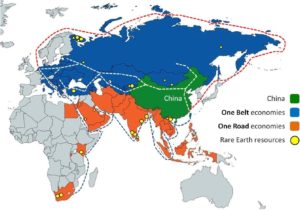
Figure 1: OBOR Corridors[21]
Additionally, the PRC and PLA complement soft power approaches such as the OBOR with non-traditional security (NTS) outreach to convince nations that the Chinese model is better than the existing one led by the United States. Non-traditional security is comprised of “health [matters], [alleviation of] humanitarian crisis, energy security, food security, environmental concerns, [response to] cross-border crimes, water resource and maritime security.[22]” The PRC utilizes NTS such as COVID-19 “vaccine diplomacy” to pull countries closer to the authoritarian regime and away from the democratic liberal order led by the United States.[23]
Digital Iron Curtain: Strengthening the CCP’s grip
Secondly, built on the back of its OBOR, the PRC aims to build a Digital Silk Road as “a deliberate attempt to create a global information highway with China at its core. In effect developing its own sticky power through technology “bundles” comprised of smart cities, smart ports, e-commerce, digital currency, communication networks, and satellite networks.[24]” Xi’s technological superiority objectives are clearly seen in his “Made in China 2025” policy, “Outline of the National Strategy for Innovation-Driven Development,” 14th Five-year Plan, and “Next-Generation Artificial Intelligence Development Plan.[25]” The PRC’s “military-civilian fusion doctrine,” looks to combine civilian and military research and development as well as integrate the actual operation of information related technologies. The PRC’s ability to merge Chinese state owned-based civilian corporations with the People’s Liberation Army (PLA) creates a CCP/state-run military-industrial complex at the helm of China’s technology.[26]
These plans and technological advancements in 5G, artificial intelligence, and quantum computing (often based on intellectual property theft from western technology companies), facilitate the PRC’s export of these technologies to OBOR countries. In doing so, the PRC seeks to control the internet by owning the cyber backbone through ubiquitous information communication technologies. This provides the ability to “strategically harvest real-time data across a substantial portion of the world and to use that data for strategic effect.[27]” The PRC already employs similar data-mining constructs to control and monitor ethnic populations internally, with complete disregard for individual rights or freedoms. Hence, by rapidly exporting and maintaining ownership of state-controlled technologies to OBOR countries, the PRC threatens to form a “digital iron curtain.”
The PLA’s Grey Zone Activities
Third, to hedge against U.S. military might and to stall for its own military growth, the PLA actively employs Grey Zone forces to operate below the threshold of armed conflict. “Grey zone activities are competitive interactions that fall between the traditional dualities of war and peace.[28]” The PLA uses maritime militias and other Grey Zone forces to avoid direct military confrontation with the United States while exerting hard power to compel nations to acquiesce to its demands. The PLA defines its maritime militias as “an armed mass organization composed of civilians retaining their regular jobs, [which is] a component of China’s armed forces, and an ‘auxiliary and reserve force’ of the PLA.[29]” The PLA employs its maritime militia actively throughout the South China Sea to aggressively misdirect other countries’ warships away from its illegal seizure of atolls and reefs located within Philippine and Vietnamese waters. Once seized, these maritime militias help protect these occupied islands while China’s massive land reclamation efforts turned them into PLA military bases.[30]
As the PRC employs military, economic, and diplomatic instruments of power to compete against the liberal Western world order, its ultimate hegemonic success will rely on its information instrument and ability to influence. As RAND Senior Political Scientist Michael Mazarr explains, “the contest whose outcome will be the most decisive…is in the competition for influence over the guiding narratives, ideas, and norms of the international system.[31]” China influences others by using information to promote authoritarian capitalism over Western free markets, in what Hans Morgenthau described as “cultural imperialism.[32]” These past few sections have shown how China seeks to usurp U.S. global hegemon and influence the global community to believe the PRC approach is superior to America’s. They are willing to use force to advance their goals, if necessary, as evidenced by the militarization of islands across the South and East China Seas. The Joint Force must play a role in Integrated Deterrence, supporting the Biden Administration’s “diplomacy first” during this “decisive decade.[33]” The rest of this article offers recommendations for the Joint Force in recognition of the PRC and PLA challenge.
Strategic Guidance & General Recommendations
The Secretary of Defense’s National Defense Strategy (NDS) and 2020 Guidance for the Development of Alliances and Partnerships (GDAP) highlight the critical role friends’ militaries provide our nation. The Chairman of the Joint Chiefs of Staff (CJCS), General Mark Milley, told the Wall Street Journal in December 2020 that the key to meeting China as America’s top national security challenge is to “have a lot of Allies, and that we [the Joint Force] help to shape the outcomes that we desire with respect to China without crossing the Rubicon into armed conflict.[34]” The PRC has transactional partners but lacks a “deep bench” of true Allies and partners on which it can rely.[35] On the contrary, Allies and partners have always been central to U.S. military success. They were foundational to U.S. victory in the American Revolution, the World Wars, the Cold War, the Persian Gulf War, and the past two decades of counterterrorism. The key question, then, is how best to partner to accomplish defense priorities.
The Joint Force must also partner to compete in ways that support Integrated Deterrence. If the United States and partners compete too aggressively, it may provoke that which it does not want—a shooting war. However, if competition is too anemic, the United States risks confirming PRC suspicions that America and its Allies do not possess the will to defend their interests. Competing effectively, while providing “off ramps” and opportunities for adversaries to “save face,” will restore and maintain deterrence. A key to success now and in the future is to widen and deepen relationships. The United States must build unshakeable mutual trust with Allies and partners, as well as with multilateral regional military networks.
0-3 Years (2022-2025): Joint Force Activities in Asia
While the Joint Forces’ role in strategic competition is secondary to the diplomatic and economic levers, its role against the PLA is primary. By expanding military engagement and building of partner security capacity to strategic geopolitical nodes corresponding with OBOR countries, the Joint Force can assist targeted countries in hedging against Chinese grey zone and NTS activities within their borders. By focusing on organizing, training, and equipping partner militaries for counterterrorism (CT), counter-narcotics (CN), counterinsurgency (COIN), and humanitarian aid and disaster relief (HA/DR), the Joint Force can demonstrate America’s role as the global security leader. CT, CN, COIN, and HA/DR engagement allows for nations to interact with the United States and Allies without being compelled to choose between the United States, Allies, or China. The Joint Force should allow countries to choose how deeply they want to partner in these programs without undue pressure, contrasting with the PRC’s coercive means.
The Joint Force is also well suited to quickly yield information related capabilities to protect its own infrastructure and combat Chinese influence. Although pervasive, Chinese information communication technologies that host the cyber backbone of China’s “Digital Silk Road” rely on physical infrastructure. Chinese government-backed businesses and state-owned enterprises that operate and maintain this infrastructure are often inseparable from the CCP and its PLA. The PLA is thus an arm of the Party more so than the state. The Joint Force contributes to the hardening, protection, and security of U.S. information communications technologies, specifically within the cyber domain, against their attacks. Additionally, it should play a role in countering the PLA’s informational campaigns and the transactional and exploitative nature of the OBOR. For instance, PRC messaging with OBOR has already resulted in a PRC shift to calling the initiative the “Belt and Road Initiative,” in an effort to soften the appearance of Chinese economic colonialism with “OBOR.” These missteps, coupled with a lack of transparency, are inherent weaknesses of authoritarian regimes—weaknesses easily exposed in the information environment and through security cooperation to Allies and partners.
Partnering for Success through Security Cooperation that Promotes the Quad
Another opportunity to counter the PRC in competition is to double down on security cooperation efforts between the United States and Asian nations. Joint Publication 1 explains that security cooperation encompasses all Department of Defense interaction with foreign defense establishments to build defense relationships that promote specific U.S. security interests, develop Allied and friendly military capabilities for self-defense and multinational operations, and provide U.S. forces with peacetime and contingency access to a host nation.[37] The Joint Force should partner with democratic states and groups that share American values, but also with PRC partners, where feasible, to drive a wedge between them.
Sustained and strengthened partnerships with India, Japan, and Australia is a practical way to support “diplomacy first.” It will also provide a solid foundation for growth in multilateral alignment. The Joint Force could align with India militarily against the PRC’s continued encroachment of its border with India. The strength of the world’s two largest democracies when united will be central to successful deterrence of PRC malign activities. Japan’s Self-Defense Forces’ modernization is critical as well. Maintaining Japan’s basing agreements with the United States, despite periodic political murmurs to the contrary, will be a strategic must in any contingency in the Indo-Pacific. Joint Force partnership with the Australian military, such as implementation of the AUKUS deal to provide innovative nuclear submarine technology, complements that nation’s strong stance against China’s regional bullying. Closely following these Quad partnerships, partnership with New Zealand is important, both in Five Eyes (FVEY) intelligence sharing matters and military exercises.[38]
Continued exercises with these and surrounding nations will strengthen our military partnerships while signaling China of our combined capability and commitment to international law. The annual Malabar Exercise, for example, is designed to strengthen maritime operations and display cooperation between navies.[39] Moreover, in Sea Dragon 2021, the Quad nations added Canada to the annual anti-submarine warfare exercise, another display of these nations’ defense commitment.
Partnering for Success with Traditional Partners & through Expanding the Quad
Strengthening ties with nations’ militaries adjacent to the South China Sea is a second way the Joint Force can compete effectively with the PLA. This includes Vietnam, the Philippines, Malaysia and Taiwan. Further, nations that depend on free passage through the South China Sea and nearby waterways are equally important, including Cambodia, Thailand, Singapore, and Indonesia. Indonesia is a country where the Joint Force could expand its efforts. It presents a tremendous opportunity to strengthen ties. Indonesia and the United States are aligned politically as large and diverse democracies, and economically connected through nearly $30 billion in trade each year.[40] The Joint Force could be a part of the American partnership with Indonesia by conducting bilateral training, port calls, security cooperation and assistance if/as approved by the State Department and Congress, and by inviting Indonesia to participate in multilateral training. Given increasing Chinese aggressiveness and that Indonesian livelihood depends on PRC acquiescence to its economic activity in shared waterways such as the South China Sea and the Strait of Malacca, Indonesia may be amenable to limited partnerships as an insurance policy.
Existing exercises of all kinds play a key role in assurance of Allies and partners and deterrence of the PRC. For instance, in January 2021, the Joint Force conducted a dual aircraft carrier exercise in international waters in the South China Sea. RDML Doug Verissimo, commander, Carrier Strike Group (CSG) Nine asserted that “through operations like this, we ensure that we are tactically proficient to meet the challenge of maintaining peace and we are able to continue to show our partners and Allies in the region that we are committed to promoting a Free and Open Indo-Pacific.[41]” Partnerships with longtime Allies such as Thailand can further global efforts for maritime compliance. Exercise Cobra Gold, (an annual Joint multilateral military and humanitarian exercise cohosted by the United States and the Kingdom of Thailand that completed its 39th iteration last year), is one such example. When combined with dozens of Freedom of Navigation Operations and multilateral exercises such as the Rim of the Pacific (RIMPAC) and Defender Pacific, the net effect strengthens interoperability with Allies and partners, reinforcing assurance and Integrated Deterrence.[42]
4-10 Years (2026-2032): Non-State Allies & Partners Beyond Asia
Given the predatory behavior of the PRC, there are other relevant but complicated groups with whom the Joint Force should partner. Many groups that are also recipients of the PRC’s oppression and mistreatment either reside within Chinese borders or those claimed by the PRC. There are over ten million Uighurs (at least 1 Million currently in “re-education” camps[43]), five million Tibetans, and forty million Protestants (upwards of eighty million when estimating house worshipers)[44] currently under PRC persecution. Across the OBOR, recipients of the PRC’s predatory loans should take great pause at the assertion of power over these groups, Hong Kong, and the continued threats against Taiwan. The Joint Force could, with proper approvals, leverage military information support operations to creatively aide these groups in ways that compete with PLA and PRC control.
As the Joint Force initially focuses on the Indo-Pacific region to compete with the PLA, it must remain cognizant of Chinese global expansion. Currently, the United States, as well as Japan, promote the “Free and Open Indo-Pacific” (FOIP) policy as a counterweight to PRC’s aggressive soft power initiatives in the Indo-Pacific Region. However, the FOIP is not nested into a broader, global policy concerning China’s OBOR throughout Africa, Europe and South America. Over the long term, the Joint Force must develop global depth against China. Europe, Africa, South America, the Middle East, and the Arctic should be specific areas of focus.
As the ongoing and unprovoked Russian war again Ukraine demonstrates, our 73-year commitment to the Northern Atlantic Treaty Organization and its partners needs constant attention to prevent Chinese usurpations. Our commitment to our Latin American partners must be reinforced as Chinese state-owned enterprises look to unbalance the region through predatory lending and resource extraction. Africa’s resources, rising population, and maturing national economies are a market ripe for Chinese influence and predatory competition. The Joint Force needs to bolster African partners to retain resiliency against Chinese influence. The Chinese move for a naval base in the United Arab Emirates, a Middle East country where the United States previously held greater sway and despite American protests, also illustrates the global nature of the current competition. China is following Russia’s lead to leverage the Artic for economic and military purposes. In response, the Joint Force needs to leverage the Department of Homeland Security and other federal agencies’ icebreakers for presence patrols during the years it will take for the Polar Security Initiative to close the “icebreaker gap.[45]” In addition to these efforts, there is even more the Joint Force could do to support “diplomacy first” initiatives.
Strategic Dynamic Force Employment – Another Opportunity for Partnering
With Commander-in-Chief approval and in concert with broader State Department diplomatic efforts, the Joint Force could conduct a rapid Combined Joint Dynamic Force Employment Operation with Japan and Taiwan on the Senkaku Islands. The operation could initially evaluate interoperability and mission capabilities for both Japanese and American forces. However, it would also serve as a test case for gauging PRC reaction, with the potential intent of creating a lasting stay-behind presence on the eight islands. This would align with President Biden’s conversation with Japan’s Prime Minister Suga to reaffirm United States’ support of Japan’s administrative claim on the islands as established by the United States—Japan Security Treaty.[46] It would also follow a January 27, 2021, Secretary of Defense Austin discussion with Japan’s Defense minister, Nobuo Kishi, to reaffirm that the Senkaku Islands are covered with the two nations’ security treaty.[47]
The PRC and PLA would perceive such an operation as a significant escalation, and it could invite a massive Chinese response. On the other hand, if conducted successfully, soon, and swiftly, it could shift the tenure of competition and enable America and its partners to regain the psychological and strategic initiative. It would also accomplish several objectives. First, it would showcase Joint Force and combined capabilities and willpower. Second, it could contribute to a partnership between Taiwan and Japan. Last, it could reinforce a defensive line stretching from the Republic of Korea to the South China Sea and beyond. Combined with lethal aid and other support to Ukraine, these actions would assure Allies and partners while also sustaining and strengthening Integrated Deterrence. They would signal the PRC, Allies, partners, and other would-be adversaries, alike, of U.S. willpower and Joint Force capabilities.
Conclusion
CAPT Mary Bookey is the Director of the Expeditionary Culture Workshop Program for the Navy Expeditionary Combat Command.
COL Bryan Groves is the Commanders’ Initiatives Group Chief at Army Forces Command.
COL Stephen Taylor is the Commander of the Joint Interagency Task Force – National Capital Region.
Lt. Col. David Temple is an Air Force Foreign Area Officer as well as a Security Forces Defender serving as the Security Forces Squadron Commander at Vandenberg Space Force Base, CA.
[1] 2022 National Defense Strategy Factsheet (unclassified).
[2] Jack Deutsch and Robbie Gramer. “Biden’s Defense Chief Puts Alliances at Center Stage of U.S. Defense,” FP.com, accessed June 17, 2022, at: https://foreignpolicy.com/2022/06/16/bidens-defense-chief-puts-alliances-at-center-stage-of-u-s-defense/.
[3] See: Chantal Da Silva and Peter Alexander. “Biden says U.S. will defend Taiwan militarily if China invades,” NBC News, May 23, 2022, accessed June 26, 2022, at: https://www.nbcnews.com/news/world/biden-taiwan-china-invade-military-intervention-rcna30033.
[4] Jim Garamone. Austin Tells Reagan Forum how U.S. will Take on Challenge of China,” December 6, 2021, accessed June 28, 2022, at: https://www.stratcom.mil/Media/News/News-Article-View/Article/2864385/austin-tells-reagan-forum-how-us-will-take-on-challenge-of-china/.
[5] Kelly Bjorklund. “We’re in a Worse Place Today Than We Were Before He Came In,” Foreign Policy.com, January 11, 2021, Former Secretary of State Rex Tillerson interview, accessed January 26, 2021, at: https://foreignpolicy.com/2021/01/11/rex-tillerson-interview-trump/https://foreignpolicy.com/2021/01/11/rex-tillerson-interview-trump/.
[6] Jim Garamone. “Esper Discusses Moves Needed to Counter China’s Malign Strategy,” Defense News. August 27, 2020, accessed February 24, 2021, at: https://www.defense.gov/Explore/News/Article/Article/2326863/esper-discusses-moves-needed-to-counter-chinas-malign-strategy/.
[7] Jim Garamone. “Biden Announces DoD China Task Force,” Defense News, February 10, 2021, accessed February 24, 2021, at: https://www.defense.gov/Explore/News/Article/Article/2500271/biden-announces-dod-china-task-force/.
[8] See: Graham Allison. Destined for War: Can America and China Escape Thucydides’ Trap? Houghton Mifflin Harcourt, 2017.
[9] See: “SOCOM Nominee Sees Communist China Fight as More Partner Building, Less Door Kicking,” USSA News, July 23, 2022, at: https://ussanews.com/2022/07/23/socom-nominee-sees-china-fight-as-more-partner-building-less-door-kicking/.
[10] LTC Christopher Wehri, Chinese Strategist on the Joint Staff (J-5), recommended these time horizons.
[11] Jonathan Ward. China’s Vision of Victory. Atlas Publishing and Media Company, 2019. Michael Pillsbury. The 100 Year Marathon. China’s Secret Strategy to Replace America as the Global Superpower. Hudson Institute, 2015.
[12] Michael Pillsbury. The 100 Year Marathon. China’s Secret Strategy to Replace America as the Global Superpower. Hudson Institute, 2015. Jonathan Ward. China’s Vision of Victory. Atlas Publishing and Media Company, 2019.
[13] Peter Mattis. “China’s ‘Three Warfares’ in Perspective,” War on the Rocks, January 30, 2018, accessed March 1, 2021, at: https://warontherocks.com/2018/01/chinas-three-warfares-perspective/.
[14] Ryan Pickerell. “Chinese bombers simulated an attack on a US Navy aircraft carrier in the South China Sea,” January 30, 2021, accessed February 20, 2021, at: https://www.msn.com/en-us/news/world/chinese-bombers-simulated-an-attack-on-a-us-navy-aircraft-carrier-in-the-south-china-sea/ar-BB1ddQuM.
[15] Graham Allison. “The Thucydides Trap.” Foreign Policy 9 (2017).
[16] China Military Power Report, November 2021, at: https://media.defense.gov/2021/Nov/03/2002885874/-1/-1/0/2021-CMPR-FINAL.PDF.
[17] Jim Garamone. “Dunford Describes U.S. Great Power Competition with Russia, China.” Defense News. March 21, 2019, accessed February 24, 2021, at: https://www.defense.gov/Explore/News/Article/Article/1791811/dunford-describes-us-great-power-competition-with-russia-china/.
[18] Michael Pillsbury. The 100 Year Marathon. China’s Secret Strategy to Replace America as the Global Superpower. Hudson Institute, 2015. Jonathan Ward. China’s Vision of Victory. Atlas Publishing and Media Company, 2019.
[19] Harinder S. Kohli, Johannes F. Linn, and Leo M. Zucker, China’s Belt and Road Initiative: Potential Transformation of Central Asia and the South Caucasus, p. 8. See also: Andrew Chatzky and James McBride. “China’s Massive Belt and Road Initiative,” CFR Backgrounder, January 28, 2020, accessed June 26, 2022, at: https://www.cfr.org/backgrounder/chinas-massive-belt-and-road-initiative. “China wants to put itself back at the centre of the world: The Belt and Road Initiative revives memories of China’s imperial tributary system, says Dominic Ziegler,” Economist, February 6, 2020, accessed June 26, 2022, at: https://www.economist.com/special-report/2020/02/06/china-wants-to-put-itself-back-at-the-centre-of-the-world. Harinder S. Kohli and Leo Zucker. ”An Economic Perspective on the BRI: Five Years after its Launch,” Emerging Markets Forum: 2019 Eurasia Meeting, January 27, 2019, p. 15.
[20] David Kilcullen, The Dragons and the Snakes: How the Rest Learned to Fight the West, New York: Oxford University Press, 2020, p. 173.
[21] Kinshuk Nag. “How China’s One Belt, One Road initiative is ushering in a new paradigm in Asian Geopolitics,” Dispatch, September 24, 2021, accessed June 26, 2022, at: https://www.thedispatch.in/how-chinas-one-belt-one-road-initiative-is-ushering-a-new-paradigm-in-asian-geopolitics/.
[22] Xue Gong, ”Non-traditional security cooperation between China and south-east Asia: Implications for Indo-Pacific geopolitics,” International Affairs, 96:1 (2020), 29-48, p. 30.
[23] Andrew Whiskeyman and Michael Berger. “Axis of Disinformation: Propaganda from Iran, Russia, and China on COVID19,” Washington Institute, February 25, 2021, accessed March 7, 2021, at: https://www.washingtoninstitute.org/policy-analysis/axis-disinformation-propaganda-iran-russia-and-china-covid-19.
[24] John Hemmings, ”Reconstructing Order: The Geopolitical Risks in China’ Digital Silk Road,” Asia Policy, Volume 15, No 1. (Jan 2020), 5-21., p. 7.
[25] Ibid., p. 12.
[26] Ibid., p. 13.
[27] Ibid., p. 9.
[28] Ryan D. Martinson and Andrew S. Erickson. China’s Maritime Gray Zone Operations, Annapolis, Maryland : Naval Institute Press. 2019. eBook., Database: eBook Collection (EBSCOhost), NDU. p. 26. See also: Kay, Larry. “Managing the Gray Zone is a Gray Matter Challenge,“ July 27, 2016, accessed March 7, 2021, at: https://smallwarsjournal.com/jrnl/art/managing-gray-zone-gray-matter-challenge.
[29] Shuxian Luo and Jonathan Panter. “China’s Maritime Militia and Fishing Fleets,” Army University Press, January-February 2021, accessed February 24, 2021 at: https://www.armyupress.army.mil/Journals/Military-Review/English-Edition-Archives/January-February-2021/Panter-Maritime-Militia/.
[30] See: James Kraska. ”China’s Maritime Militia Vessels May Be Military Objectives During Armed Conflict,“ July 7, 2020, accessed March 7, 2021, at: https://thediplomat.com/2020/07/chinas-maritime-militia-vessels-may-be-military-objectives-during-armed-conflict/.
[31] Michael J. Mazarr, ”The Essence of the Strategic Competition with China.” Washington Headquarters Services, PRISM Vol. 9, No. 1., October 21, 2020, accessed February 24, 2021, at: https://www.whs.mil/News/News-Display/Article/2389522/the-essence-of-the-strategic-competition-with-china/.
[32] Hans Morgenthau, Politics Among Nations: The Struggle for Power and Peace, Brief Edition, New York: McGraw Hill, 1993, p. 72.
[33] Interim National Security Strategic Guidance, March 2021.
[34] GEN Mark Milley. “Gen. Mark Milley: The Biggest Security Challenges for the U.S.,” Wall Street Journal, December 13, 2020, accessed February 20, 2021, at: https://www.wsj.com/articles/gen-mark-milley-the-biggest-security-challenges-for-the-u-s-11607824353.
[35] Mark Cancian. “Inflicting Surprise: Gaining Competitive Advantage in Great Power Conflicts,” Center for Strategic and International Studies, January 29, 2021, accessed February 20, 2021, at: https://www.csis.org/analysis/inflicting-surprise-gaining-competitive-advantage-great-power-conflicts.
[36] Joint Publication 3-0: Operations, definition of competition.
[37] Joint Publication 1, Doctrine for the Armed Forces of the United States. March 25, 2013, incorporating Change 1 July 12, 2017. Page I-11.
[38] Anne-Marie Brady. ”New Zealand’s relationship with China is at a tipping point,” The Guardian, July 31, 2020, accessed February 22, 2021, at: https://www.theguardian.com/world/2020/jul/31/new-zealands-relationship-with-china-is-at-a-tipping-point.
[39] Rajeswari Pillai Rajagopalan. “The Quad Conducts Malabar Naval Exercise: Australia is back for the second year in a row, underscoring the Quad’s deepening commitment to cooperation in the Indo-Pacific,” The Diplomat, August 27, 202, accessed June 30, 2022, at: https://thediplomat.com/2021/08/the-quad-conducts-malabar-naval-exercise/.
[40] Andreyka Natalegawa. ”Enhancing the U.S.-Indonesia Strategic Partnership.” Center for Strategic & International Studies, July 9, 2018, accessed February 23, 2021, at https://csis.org/analysis/enhancing-us-indonesia-strategic-partnership.
[41] US Navy News Release, February 9, 2021, accessed February 26, 2021, at https://www.joint-forces.com/world-news/40379-south-china-sea-dual-us-navy-carrier-strike-groups.
[42] DoD Releases Fiscal Year 2021 Freedom of Navigation Report. April 1, 2022, accessed June 28, 2028, at: https://www.defense.gov/News/Releases/Release/Article/2986974/dod-releases-fiscal-year-2021-freedom-of-navigation-report/. Commander, U.S. 3rd Fleet Public Affairs. “U.S. Navy Announces 28th RIMPAC Exercise,” May 31, 2022, accessed June 28, 2022, at: https://www.navy.mil/Press-Office/News-Stories/Article/3048569/us-navy-announces-28th-rimpac-exercise/ and Airman 1st Class Breanna Gossett. “Pacific Defender 2022,” February 4, 2022, accessed June 28, 2022, at: https://www.pacom.mil/Media/News/News-Article-View/Article/2924247/pacific-defender-2022/.
[43] Olivia Enos and Hardin Lang. ”The United States Should Give Fleeing Uighurs a Home.” Foreign Policy.com, February 12, 2021, accessed February 14, 2021, at: https://www.foreignpolicy.com/202102/12/united-states-uighurs-persecution-china-refugees-resettlement/.
[44] Alice Su. ”For China’s underground churches, this was no easy Christmas.” Los Angeles Times, December 25, 2019, accessed February 21, 2021, at: https://www.latimes.com/world-nation/story/2019-12-25/china-church-sinicization.
[45] Adrienne Hopper and Ryan Burke. “Bridging the Gap: How the United States can Immediately Address its Artic Capability Limitations,” Modern War Institute, June 22, 2022, accessed June 24, 2022, at: https://mwi.usma.edu/bridging-the-gap-how-the-united-states-can-immediately-address-its-arctic-capability-limitations/.
[46] Aamer Madhani, “Biden, Japan PM discuss China Action Near Senkaku Islands.” Associated Press. January 27, 2021, accessed February 24, 2021 at: https://apnews.com/article/joe-biden-beijing-yoshihide-suga-tokyo-justin-trudeau-d1f7231d0954ee10ba997c487ecac90c. United States, Briefing Room. “U.S.-Japan Joint Leaders’ Statement: ‘U.S.-Japan Global Partnership for a new Era.’” The White House, April 16, 2021, at: https://www.whitehouse.gov/briefing-room/statements-releases/2021/04/16/u-s-japan-joint-leaders-statement-u-s-japan-global-partnership-for-a-new-era/.
[47] Jesse Johnson. “New U.S. Defense Chief Confirms Senkakus Fall Under Security Treaty.” Japan Times, January 24, 2021, accessed February 25, at: https://www.japantimes.co.jp/news/2021/01/24/national/politics-diplomacy/us-japan-defense-senkakus/.
[48] Grant Highland. Comment made in the chat window during a Joint Professional Military Education-II (JPME-II) conversation with former National Security Advisor, LTG (Ret.) McMaster, February 26, 2021. Used with permission.
[49] H.R. McMaster. Battlegrounds: The Fight to Defend the Free World, 2020.
[50] Antony J. Blinken. “A Foreign Policy for the American People,” March 3, 2021, accessed March 7, 2021, at: https://www.state.gov/a-foreign-policy-for-the-american-people/.
